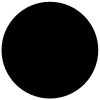Global phenomenon coming to Aarhus: Spend a night with wild animals in the University Park
A herd of wild animals from the savannah in Africa – made from recycled materials – will come to Aarhus on 18-19 July as part of “The Herds,” an art project and climate march in one. The herd will pass by Dokk1, the Museum of Natural History, and the University Park.

As a student or staff at AU, it may seem tempting to take a nap in the university park and perhaps daydream your way to the Serengeti. That daydream will be brought to life when the wild animals built from recycled materials cardboard, wood and metal come to the University Park on 18 and 19 July. Visitors can enjoy a free safari experience here – and even spend the night with the animals.
The art project and climate march The Herds began its more than 20,000-kilometre journey back in April in Kinshasa in DR Congo and will pass 19 different destinations in 11 countries, including Aarhus and Copenhagen, before the journey ends north of the Arctic Circle in August.
That’s why it’s something quite special when the herd passes by the university and the Museum of Natural History, writes Lead of Press and Communication at the Museum of Natural History, Michael Lindskau Nielsen, in a statement to Omnibus about the remarkable visit.
"The Herds is an international one-of-a-kind, world-class climate march," he says.

The Herd's 20,000-kilometre route from DR Congo to north of the Arctic Circle
Kinshasa, DR Congo (April 9-11)
Lagos, Nigeria (April 18-20)
Dakar, Senegal (April 25-27)
Marrakesh, Morocco (May 2-5)
Casablanca and Rabat, Morocco (May 9-12)
San Fernando, Cádiz, Spain (June 1)
Madrid, Spain (June 6-9)
Marseille and Arles, France (June 13-15)
Venice, Italy (June 17)
Paris, France (June 20-22)
London, England (June 27-29)
Manchester, England (July 3-5)
Aarhus, Denmark (July 18-19)
Copenhagen, Denmark (July 19-20)
Stockholm, Sweden (July 24-26)
Trondheim, Norway (July 28-30)
North of the Arctic Circle, Norway (August)
Source: The Herds
Climate march for the animals: Fleeing climate disasters
Although the Museum of Natural History is looking forward to The Herds passing by, the reason behind the visit is less uplifting when it comes to the living conditions of real wild animals.
"They have to respond to climate change and flee across borders from climate disasters. The climate march is therefore intended, among other things, to highlight how animals’ living conditions in the wild are changing as a result of an ecosystem that is, unfortunately, on the verge of collapse,” Michael Lindskau Nielsen says.
“The animals’ living conditions in the wild are changing as a result of an ecosystem that is, unfortunately, on the verge of collapse,” Michael Lindskau Nielsen says.
He also emphasises that climate challenges don't stay within specific national borders – something the climate march through the 11 countries helps to illustrate. That's why new local animals are added for every new destination The Herds pass on their journey.
This means that by the time it arrives at University Park, the herd of animals will have grown steadily since April. In this connection, the Museum of Natural History has built a wolf and a red deer as the Aarhus contribution to the pack – and which you can already see in the museum café.
Night at the museum
There are plenty of things for visitors to look forward to in the evening, during the night, and the following morning when The Herds will be staying in and around the Museum of Natural History, Michael Lindskau Nielsen says.
"The Museum of Natural History ensures a real safari atmosphere through light and sound installations. At the same time, there is a campfire with bedtime stories and stories about the animals in the evening. We’re going to host a "Night at the Museum", where you have the opportunity to visit the museum 'after dark' with flashlights," he reveals, referring to the legendary film of the same name.

Visitors can also build their own animal out of cardboard, and at 19:00 there will be a conversation about our relationship with nature and the importance of conservation between Bo Skaarup, Director of the Museum of Natural History, and Bengt Holst, Chair of the Danish Animal Ethics Council and former Scientific Director of Copenhagen Zoo.
This text is machine translated and post-edited by Cecillia Jensen

